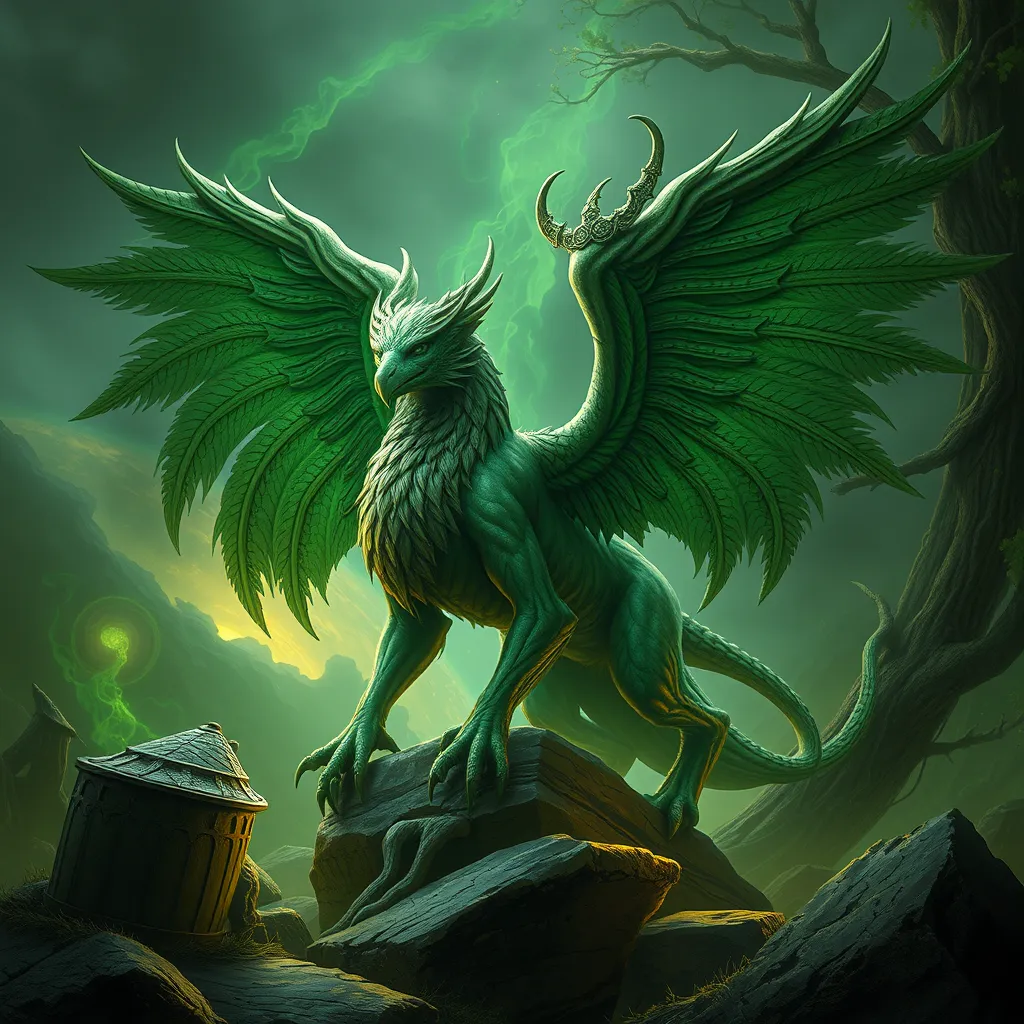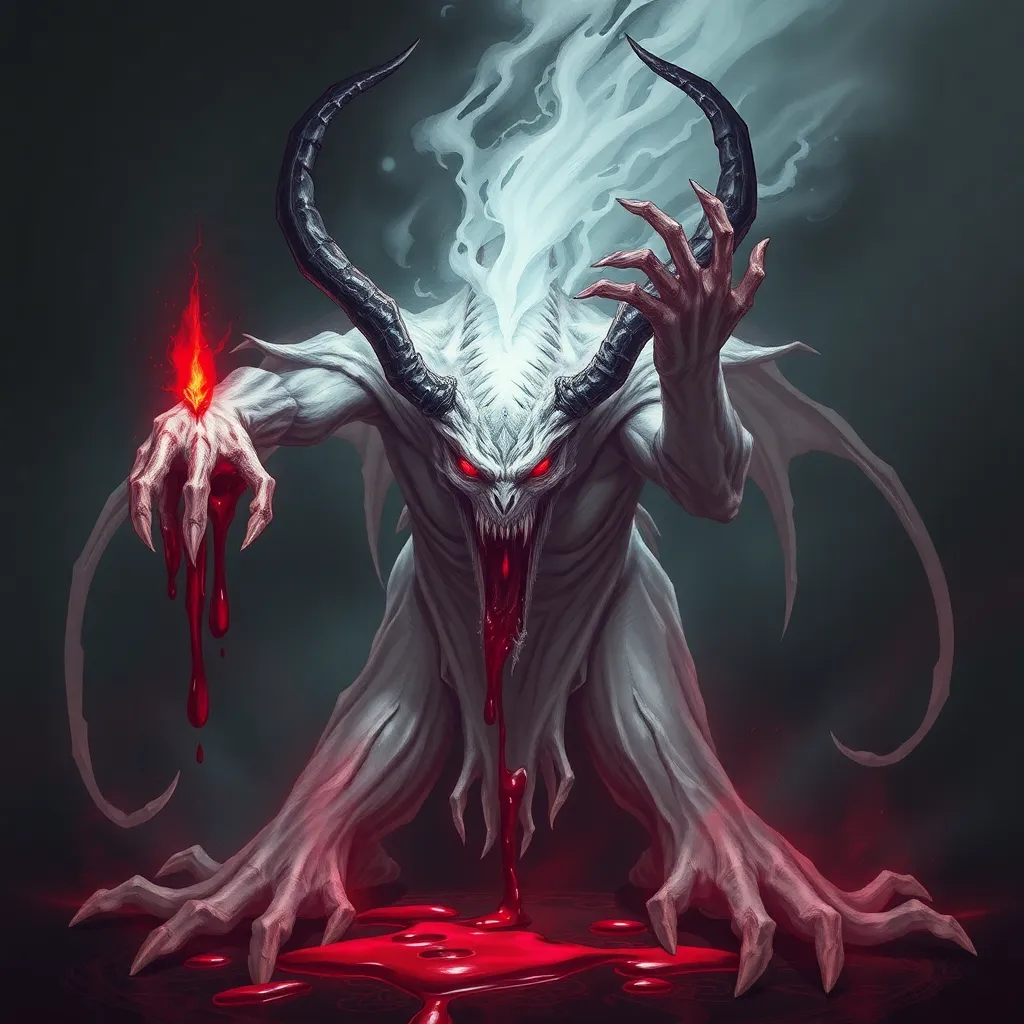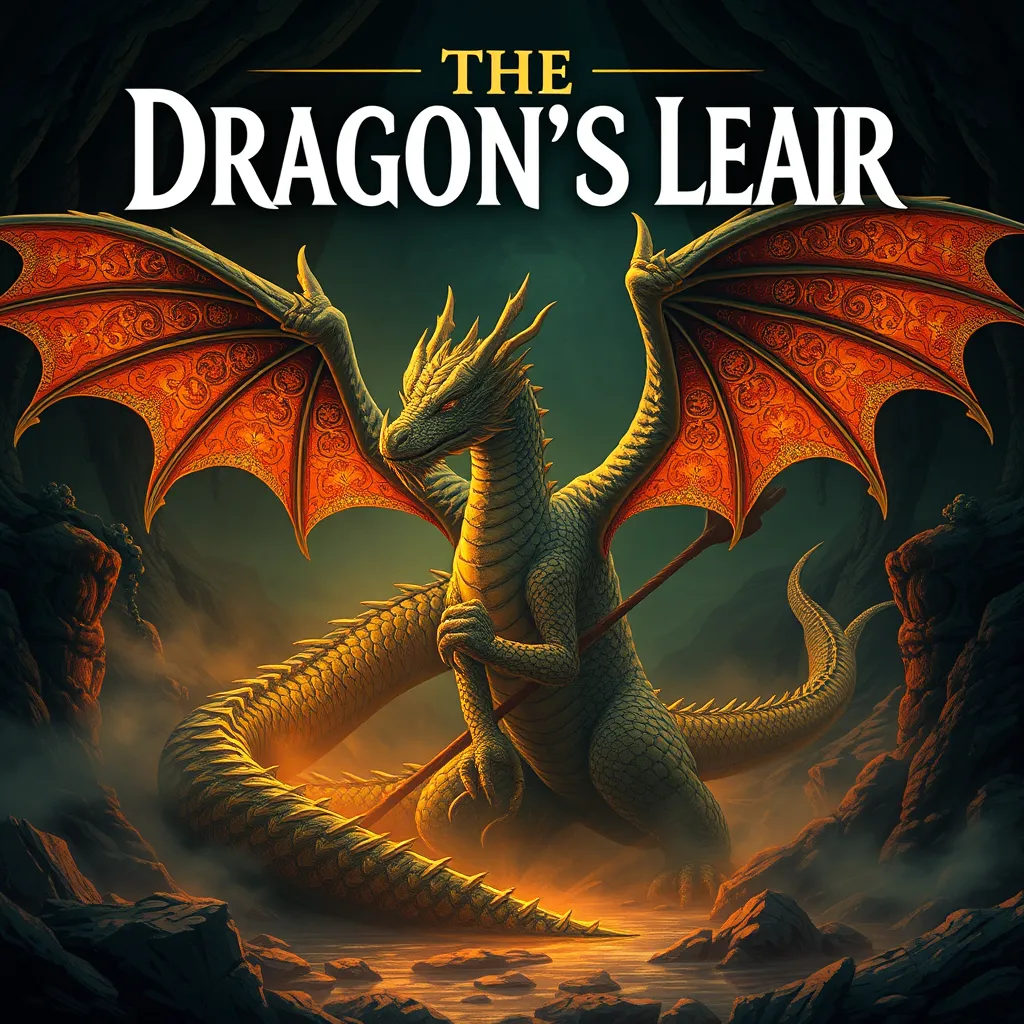The Griffin and the Green Man: Exploring the Intersection of Celtic and Medieval Lore
I. Introduction
Mythological creatures have long captivated human imagination, serving as symbols of cultural beliefs, values, and aspirations. They often embody the essence of nature, power, and the supernatural, weaving intricate tales that transcend generations. Among the myriad of these fascinating beings, the Griffin and the Green Man stand out, each steeped in rich history and symbolism.
This article seeks to explore the connections between the Griffin and the Green Man within the contexts of Celtic and Medieval traditions. By delving into their origins, representations, and cultural significance, we can uncover the deeper meanings these figures hold in the tapestry of folklore.
II. The Griffin: A Symbol of Power and Protection
A. Origins and characteristics of the Griffin in mythology
The Griffin, a majestic creature with the body of a lion and the head and wings of an eagle, is a symbol of power and protection found in various cultures. Its dual nature combines the strength of the lion, often regarded as the king of beasts, with the swiftness and keen vision of the eagle, the ruler of the skies. This formidable combination has made the Griffin a popular emblem in heraldry, signifying bravery and nobility.
B. The Griffin in Celtic culture: meanings and representations
In Celtic culture, the Griffin is often associated with guardianship and the protection of the divine. It was believed that Griffins guarded treasures and sacred places, serving as protectors of the earth’s natural resources. Their presence in Celtic art often signifies a connection to the spiritual and the material world, embodying the balance between strength and wisdom.
C. Role of the Griffin in Medieval art and architecture
During the Medieval period, the Griffin emerged as a popular motif in art and architecture. It adorned the facades of cathedrals and castles, symbolizing strength and divine protection. Artists depicted Griffins in illuminated manuscripts, tapestries, and sculptures, reinforcing their significance in both secular and religious contexts. The creature’s regal stature made it an ideal representation of noble houses, further embedding it in the cultural fabric of the time.
III. The Green Man: Nature’s Guardian
A. Definition and features of the Green Man
The Green Man is a fascinating figure often depicted as a face surrounded by or made entirely of foliage. He symbolizes the vitality of nature and the cycle of growth, death, and rebirth. The Green Man’s imagery can be seen as an embodiment of the earth’s fertility and the interconnectedness of life.
B. Roots of the Green Man in Celtic traditions
Tracing back to Celtic traditions, the Green Man represents the spirit of nature and the deity of vegetation. In ancient Celtic beliefs, he was revered as a symbol of rebirth and regeneration, often associated with the changing seasons. His presence in sacred groves and rituals underlines the importance of nature in Celtic spirituality.
C. Evolution of the Green Man in Medieval Europe
In Medieval Europe, the Green Man evolved into a popular motif in churches and cathedrals, often carved into stone and woodwork. This adaptation reflected the growing interest in nature and its spiritual significance during the period. The Green Man began to symbolize not only the cycle of life but also the harmony between humanity and the natural world.
IV. Common Themes in Celtic and Medieval Lore
A. Nature and the supernatural: how both figures embody these concepts
Both the Griffin and the Green Man serve as embodiments of nature and the supernatural. While the Griffin represents the protective forces of nature, the Green Man encapsulates its vitality and regenerative power. Together, they highlight the interconnectedness of all living beings and the importance of respecting nature’s balance.
B. The fusion of animal and human traits in mythological symbolism
The blending of animal and human traits is a common theme in both figures. The Griffin’s hybrid form signifies the union of earth and sky, while the Green Man’s leafy visage represents humanity’s deep-rooted connection to nature. This fusion illustrates the belief that humans are part of a larger ecosystem and that their actions have profound effects on the natural world.
C. The significance of fertility and regeneration
Fertility and regeneration are key themes in the lore surrounding both the Griffin and the Green Man. The Griffin’s association with protection over treasures can also extend to the protection of life and fertility, while the Green Man directly symbolizes nature’s ability to renew itself. Together, these figures represent the cyclical nature of life, reflecting the importance of nurturing both the land and its inhabitants.
V. Cultural Interactions: When Celtic and Medieval Worlds Collide
A. Historical context of Celtic and Medieval interactions
The interactions between Celtic and Medieval cultures were complex, marked by the blending of traditions and beliefs. As the Medieval period progressed, the Celtic influence persisted, particularly in regions where Celtic tribes thrived. This cultural exchange facilitated the transmission of stories, motifs, and artistic styles.
B. The transmission of stories and motifs across cultures
Legends and tales featuring the Griffin and the Green Man traveled across regions, often adapting to local beliefs and customs. As these figures were incorporated into new narratives, they retained their symbolic meanings while gaining new interpretations. This adaptability showcases the resilience of mythological storytelling across time and space.
C. The blending of artistic styles and iconography
The artistic representations of the Griffin and the Green Man reflect the blending of Celtic and Medieval styles. While Celtic art is known for its intricate knotwork and spirals, Medieval art introduced more realistic portrayals. This fusion can be seen in illuminated manuscripts and sculptures, where both figures embody the artistry of their respective cultures.
VI. The Griffin and the Green Man in Modern Interpretations
A. Contemporary representations in literature and media
In modern literature and media, the Griffin and the Green Man continue to inspire artists and writers. They appear in fantasy novels, films, and artworks, symbolizing the enduring fascination with mythology. Contemporary interpretations often emphasize their roles as guardians of nature and symbols of power.
B. The resurgence of interest in Celtic and Medieval mythology
There has been a notable resurgence of interest in Celtic and Medieval mythology in recent years. As people seek connections to their cultural heritage, figures like the Griffin and the Green Man gain renewed significance. This interest fuels a desire to explore ancient stories and reclaim lost traditions.
C. Symbolism in modern environmental movements
In the context of modern environmental movements, both the Griffin and the Green Man symbolize the urgent need to protect nature. Their representations as guardians of the earth resonate with contemporary concerns about environmental degradation and climate change. By invoking these mythological figures, activists emphasize the importance of preserving the planet for future generations.
VII. Conclusion
The Griffin and the Green Man are more than mere mythological creatures; they are rich symbols of cultural heritage that reflect humanity’s relationship with nature and the supernatural. Their enduring legacy continues to inspire and provoke thought about our place in the world. As we explore and celebrate the rich tapestry of folklore, we recognize the importance of these figures in understanding our past and shaping our future.
VIII. Further Reading and Resources
A. Suggested books and articles on Celtic and Medieval lore
- The Book of Celtic Myths by David Russell
- Mythical Beasts: A Bestiary of Creatures from Celtic Lore by Rebecca A. Brown
- The Green Man: The Archetype of Our Oneness with the Earth by William Anderson
B. Museums and cultural sites to visit
- The British Museum, London
- The National Museum of Scotland, Edinburgh
- The Cathedrals of England, featuring Green Man carvings
C. Online resources and communities for mythological studies



